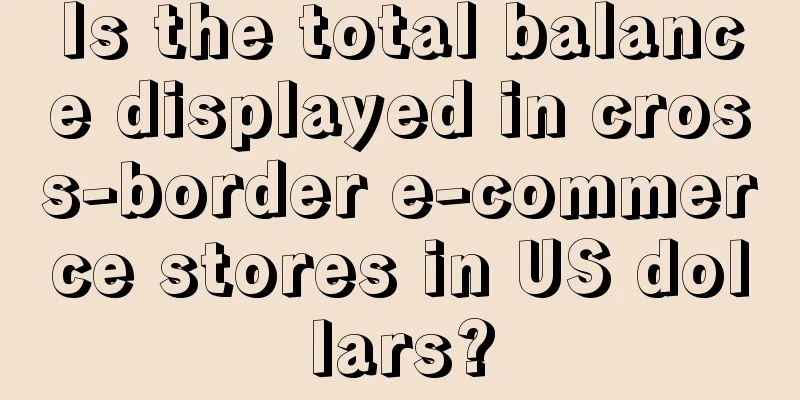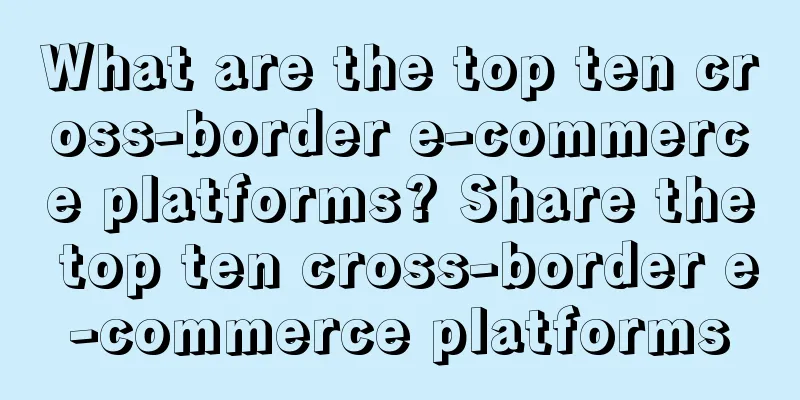Is the total balance displayed in cross-border e-commerce stores in US dollars?

|
In the field of cross-border e-commerce, many sellers are concerned about whether the total balance displayed in the store is in US dollars. This issue involves multiple factors such as currency type and exchange rate, which requires in-depth discussion. This article will analyze this in detail to help you better understand the currency situation in cross-border e-commerce. 1. Is the total balance displayed in cross-border e-commerce stores in US dollars? The total balance displayed in cross-border e-commerce stores is usually based on the primary currency set by the seller. For example, if the seller sets the primary currency to US dollars, the total balance displayed in the store will be in US dollars. However, some cross-border e-commerce platforms also support the display of multiple currencies, which can be switched according to the user's geographical location and preferences. 2. How much capital does cross-border e-commerce require? The amount of money required for cross-border e-commerce varies from person to person and depends on many factors, including but not limited to the following: Inventory funds: Cross-border e-commerce operations require the purchase of commodity inventory, so sufficient funds are needed to purchase commodities. The size of inventory funds depends on factors such as sales scale, commodity types and procurement channels. Advertising costs: It takes a certain amount of advertising costs to promote products on cross-border e-commerce platforms. Sellers can choose different advertising formats and delivery strategies, so the size of advertising costs will also vary. Logistics costs: Cross-border e-commerce needs to consider the logistics costs of goods, including transportation costs, tariffs, customs clearance fees, etc. Logistics costs depend on factors such as the weight, volume, destination and mode of transportation of the goods. Platform fees: Cross-border e-commerce platforms usually charge a certain handling fee or service fee. Sellers need to take these platform fees into account and include them in their cost considerations. In general, the funds required for cross-border e-commerce are not fixed, but depend on individual circumstances and business strategies. Sellers need to plan funds reasonably based on their actual situation. |
<<: How are Amazon product ratings calculated?
>>: Can shein sell the same product? How does shein list products?
Recommend
Will the cool and addictive “Wandans” be more popular than the skit?
What impact will the explosive popularity of live-...
Is PayPal legal in China? Is PayPal regulated in China?
With the rapid development of the Internet, e-comm...
Assets increased by over 100 million! Review of how a bank managed 20,000 private domain customers with 5 people in 5 months
In recent years, more and more companies have paid...
3,300 stores opened in 10 years, how can the fresh food industry do a good job in private domain? An article dismantles Qiandama’s private domain system
At present, Qiandama has set up stores in more tha...
Anthropic investors share their latest thoughts on vertical AI implementation
With the widespread application of AI technology i...
The gaming industry is rushing into the private sector
In order to stand out in the fierce market competi...
The road to improving the capabilities of product managers and operations begins with becoming a member of the Qidian Classroom!
The Internet industry is a rapidly changing and hi...
In the face of industry involution, what else can coffee brands do besides lowering prices?
Starbucks insists on taking the high-end route in ...
2023 Marketing Predictions | CMOs will incorporate customer relationship health into new metrics
An industry basically relies on acquiring new cust...
Brand No. 1: How to use verbs to call to action
This article shares five key points that need to b...
How do express delivery companies operate in private domains? A complete analysis of SF Express’s private domain operations
Many businesses are still expanding their private ...
What is the delivery process of Wish? Steps
If you want to open a store on a cross-border e-co...
How to plant grass on 618?
This article describes the methodology of brand pr...
Thoughts on Huajia’s failure: From monthly sales exceeding 100 million to now closing down for self-rescue, why?
Huajia was once very successful and well-known in ...
Is exchanging RMB for foreign currency settlement or purchase of foreign exchange? What is the difference between the two?
In international trade and travel, the exchange of...









